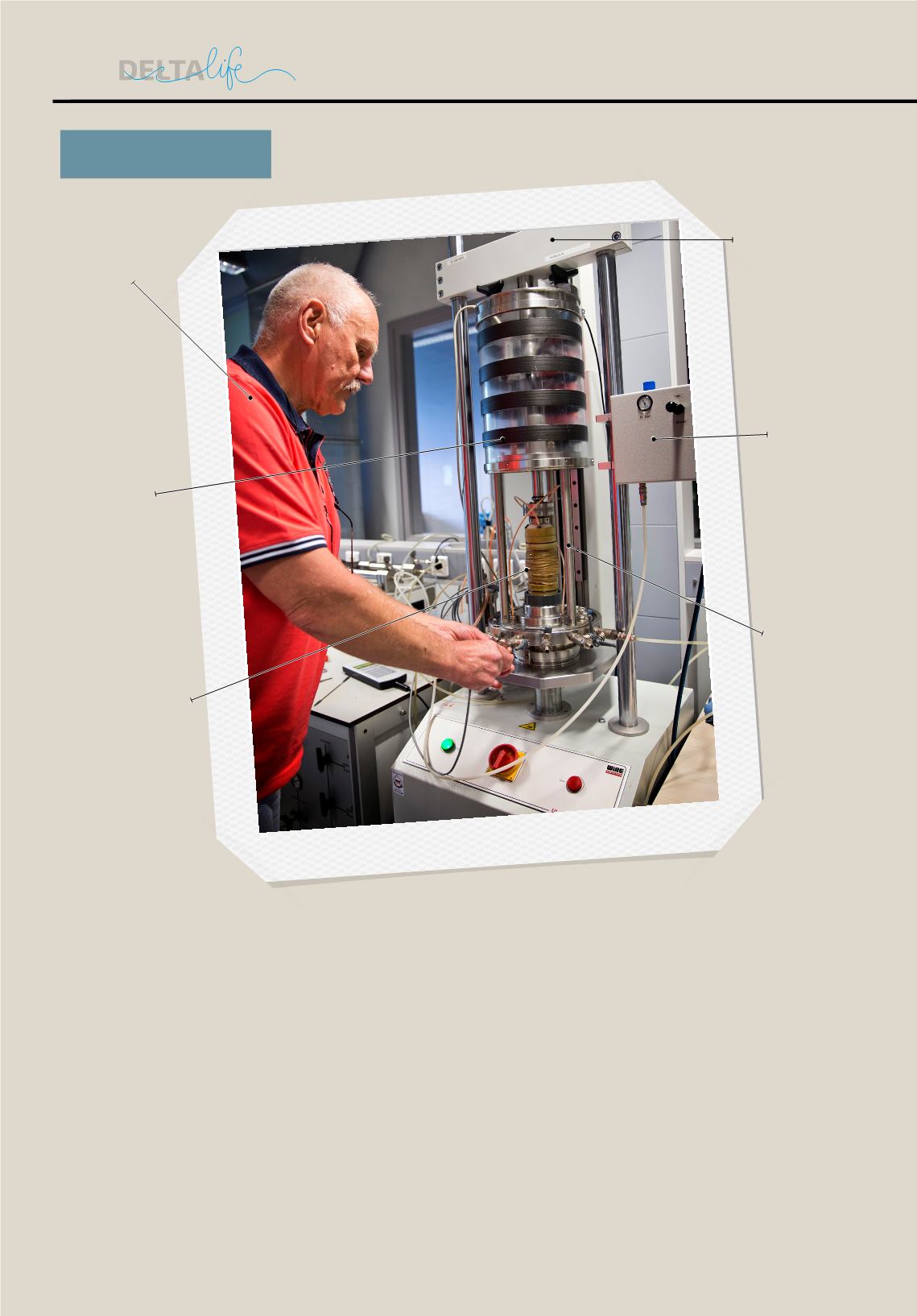

Vertical pressure
can be varied up to
2000 kPa: that is
the equivalent of a
depth of 200 m.
Pressure
meter.
Groundwater from
the location under
scrutiny is pumped
into the array.
The shear stress in
the the material is
measured using a
force transducer.
Lambert Smidt, a
lab worker in the
Geolab, places the
core in the test
array.
The membrane
delivers an effective
stress to the soil.
22
FOTO: GUUS SCHOONEWILLE
Deltares is studying the strength and deformation of the subsurface by conducting
load tests in the Geotechnical Laboratory.
I
n our search for renewable energy, we are building
more and more wind farms at sea. It is important for
wind turbines to stay straight and upright. To ensure
that they do, contractors, engineering firms and energy
suppliers need to know how strong the subsurface is
and when it can weaken or collapse. The situation can be
different in every location, depending on the structure
of the sea floor and the wind turbine itself. In the end,
wave loads, currents and the turbine exert a load on
the subsurface. Furthermore, the structure of the sub
surface can vary greatly and that affects the stability
of the turbine. In order to determine the condition
of the subsurface in a particular area as accurately
as possible, test drilling is therefore taking place at
different locations. Triaxial tests are being conducted
to subject the drilled cores to static and cyclical loads,
and to determine the strength of the ground. Designer
will be able to use the resulting information to alter
the structure, maximise the lifetime of the turbine and
minimise maintenance costs. Deltares is conducting
research of this kind for a range of European countries
involved in building wind farms at sea such as Denmark,
Germany and the Netherlands.
STUDYING THE STRENGTH OF THE
SEA FLOOR FOR WIND FARMS
TESTING GROUND



















